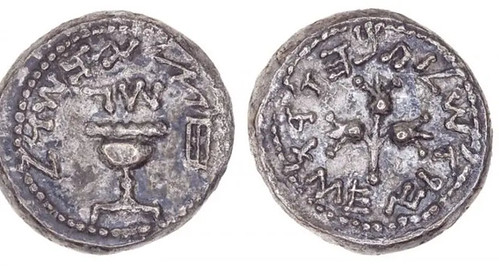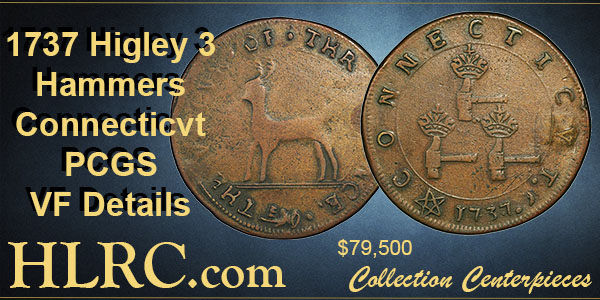
PREV ARTICLE
NEXT ARTICLE
FULL ISSUE
PREV FULL ISSUE
V25 2022 INDEX E-SYLUM ARCHIVE HALF-SHEKEL FROM THE GREAT REVOLT DISCOVEREDArthur Shippee, Howard Berlin and Paul Horner passed along an article about another recent coin find. Thank you! -Editor A rare, half-shekel coin from the Great Revolt from 66 CE to 70 CE during the Second Temple period has been discovered in Jerusalem's Ophel excavations south of the Temple Mount.
The Ophel – or citadel – is the still-extant Herodian, cased-in Temple Mount bordered to the south by a saddle, followed by the ridge known as the southeastern hill that stretches down to the King's Garden and the lower Siloam Pool. Two kings of Judah, Yotam and Manasseh, are described in the Book of 2 Chronicles to have massively strengthened the Ophel fortifications and was either very close to or identical with the In the destruction layer, dozens of Jewish coins were found from the period of the Great Revolt, most of them made of bronze. They also included a particularly rare and unusual find – a silver coin in a half-shekel denomination originating from 69/70 CE.
The rare silver coin was cleaned at the conservation lab of the Institute of Archaeology and identified by Dr. Yoav Farhi, the team's numismatic expert and curator of the Kadman Numismatic Pavilion at the Eretz Israel Museum in Tel Aviv. Silver coins from the Great Revolt were the first and the last in ancient times to bear the title
During the Great Revolt against Rome, the Jews in Jerusalem minted bronze and silver coins. Most of the silver coins featured a goblet on one side, with ancient Hebrew script above it noting the year of the Revolt. Depending on its denomination, the coins also included an inscription around the border noting either,
According to the researchers, half-shekel coins with an average weight of seven grams were also used to pay the
To read the complete article, see:
Wayne Homren, Editor The Numismatic Bibliomania Society is a non-profit organization promoting numismatic literature. See our web site at coinbooks.org. To submit items for publication in The E-Sylum, write to the Editor at this address: whomren@gmail.com To subscribe go to: https://my.binhost.com/lists/listinfo/esylum All Rights Reserved. NBS Home Page Contact the NBS webmaster 
|

